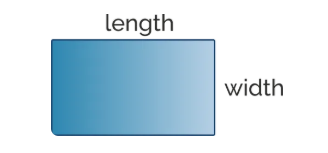1. What is the Carpet Calculator?
Definition: This calculator computes the area, adjusted area (including wastage), and total cost of carpet needed for a room, supporting various shapes such as rectangular, circular, oval, and pentagonal.
Purpose: It is used in home improvement, interior design, and flooring projects to estimate carpet requirements and costs, ensuring accurate material purchasing and budgeting.
2. How Does the Calculator Work?
The calculator uses the following equations:
- Rectangular Area: \( A = L \times W \)
- Circular Area: \( A = \pi \times R^2 \)
- Oval Area: \( A = \pi \times A_{\text{axis}} \times B_{\text{axis}} \)
- Pentagonal Area: \( A = \frac{5 \times S^2 \times \cot(\pi/5)}{4} \approx 1.7204774 \times S^2 \)
- Adjusted Area: \( A_{\text{adj}} = A \times (1 + \frac{c}{100}) \)
- Cost: \( C = A_{\text{adj}} \times P \)
Where:
- \( A \): Carpet area (m², cm², mm², in², ft², yd²);
- \( L \): Length (m, cm, mm, in, ft, yd);
- \( W \): Width (m, cm, mm, in, ft, yd);
- \( R \): Radius (m, cm, mm, in, ft, yd);
- \( A_{\text{axis}} \): A-axis of oval (m, cm, mm, in, ft, yd);
- \( B_{\text{axis}} \): B-axis of oval (m, cm, mm, in, ft, yd);
- \( S \): Side length of pentagon (m, cm, mm, in, ft, yd);
- \( A_{\text{adj}} \): Adjusted area with wastage (same units as \( A \));
- \( c \): Wastage percentage (e.g., 10 for 10%);
- \( P \): Price per unit area (converted to $/m²);
- \( C \): Total cost ($, €, £).
Steps:
- Select the carpet shape (rectangular, circular, oval, pentagonal).
- Enter the shape-specific dimensions with their units.
- Enter the wastage percentage (default 10%) to account for cuts and errors.
- Select the area unit and enter the price per unit area with its currency.
- Convert dimensions to meters and price to USD/m² for calculation.
- Calculate the carpet area based on the shape’s formula.
- Compute the adjusted area including wastage.
- Calculate the total cost by multiplying adjusted area by price.
- Convert outputs to selected units and display results, formatted appropriately.
3. Importance of Carpet Calculation
Calculating carpet requirements is crucial for:
- Accurate Purchasing: Ensures you buy the right amount of carpet, avoiding shortages or excess.
- Cost Estimation: Helps budget for materials by accounting for area and wastage.
- Waste Reduction: Minimizes leftover material through precise measurements.
- Project Planning: Assists in coordinating installation and material delivery.
4. Using the Calculator
Example 1 (Rectangular Room): Calculate the carpet needed for a rectangular living room:
- Shape: Rectangular;
- Length: \( L = 20 \, \text{ft} \approx 6.096 \, \text{m} \);
- Width: \( W = 15 \, \text{ft} \approx 4.572 \, \text{m} \);
- Wastage: \( c = 10\% = 0.10 \);
- Price: \( P = \$5/\text{ft}^2 \approx \$53.8196/\text{m}^2 \);
- Area: \( A = 6.096 \times 4.572 \approx 27.8711 \, \text{m}^2 \approx 300 \, \text{ft}^2 \);
- Adjusted Area: \( A_{\text{adj}} = 27.8711 \times (1 + 0.10) \approx 30.6582 \, \text{m}^2 \approx 330 \, \text{ft}^2 \);
- Cost: \( C = 30.6582 \times 53.8196 \approx \$1650 \);
- Result: \( A = 300.0000 \, \text{ft}^2 \), \( A_{\text{adj}} = 330.0000 \, \text{ft}^2 \), \( C = 1650.0000 \, \$ \).
Example 2 (Circular Rug): Calculate the carpet needed for a circular rug:
- Shape: Circular;
- Radius: \( R = 2 \, \text{m} \);
- Wastage: \( c = 10\% = 0.10 \);
- Price: \( P = €20/\text{m}^2 \approx \$21.4/\text{m}^2 \);
- Area: \( A = \pi \times 2^2 \approx 12.5664 \, \text{m}^2 \);
- Adjusted Area: \( A_{\text{adj}} = 12.5664 \times (1 + 0.10) \approx 13.8230 \, \text{m}^2 \);
- Cost: \( C = 13.8230 \times 21.4 \approx \$295.81 \approx €276.46 \);
- Result: \( A = 12.5664 \, \text{m}^2 \), \( A_{\text{adj}} = 13.8230 \, \text{m}^2 \), \( C = 276.4600 \, € \).
5. Frequently Asked Questions (FAQ)
Q: Why include a wastage percentage?
A: Wastage accounts for cuts, seams, and installation errors, ensuring you order enough carpet. A 10% wastage is commonly recommended.
Q: Can I use this calculator for irregular rooms?
A: This calculator assumes a single shape. For irregular rooms, break the area into simpler shapes (e.g., rectangles), calculate each separately, and sum the areas manually.
Q: How do I choose the price per unit area?
A: Check the carpet supplier’s pricing (e.g., $/ft² or $/m²). Ensure the area unit matches the price unit for accurate cost calculations.
 Home
Home
 Back
Back
